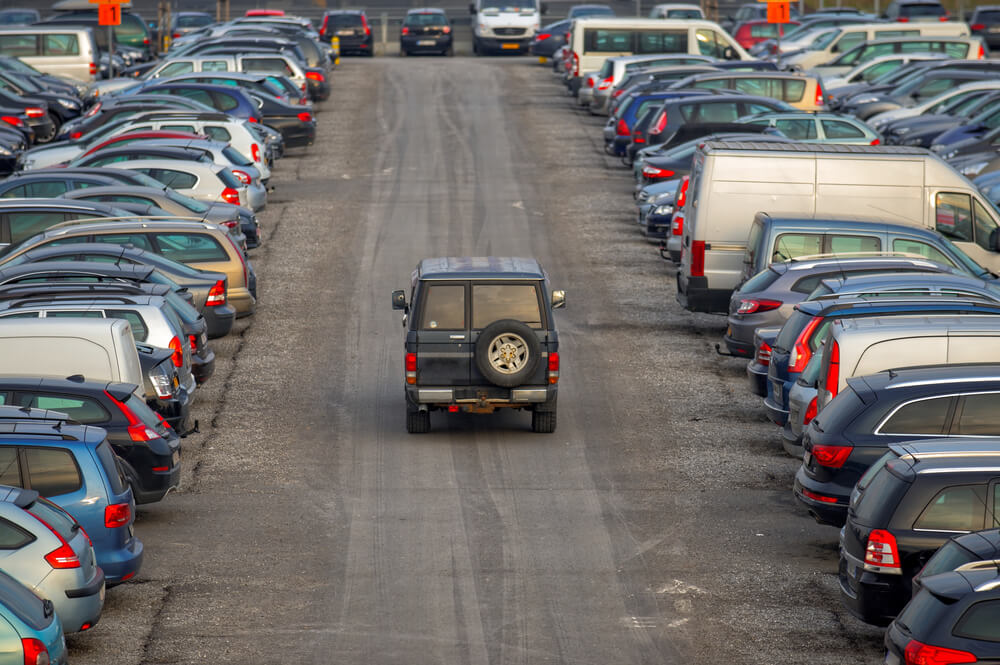Designing a Safe and Effective Parking Lot
It takes careful planning to design a safe and effective parking lot. You must consider primary factors such as your physical space, the lot’s purpose, your budget, and any design regulations. You should also address traffic flow, security measures, and accessibility. This guide to parking lot design can help you plan a lot that prioritizes driver safety and parking efficiency.
Considerations for Effective Parking Lot Designs

The optimal physical parking lot layout depends on the intended use of the lot. Residential parking lots, such as those for apartment complexes, will have very different design needs compared to commercial parking areas like shopping centers. Consider the following factors to help you develop a safe and effective parking lot design.
Traffic Flow Rates
The number of cars per day and the rate of traffic at specific times can play a significant role in your overall design. Lots that see consistent traffic can utilize features such as standard parking stall dimensions and regular traffic lanes. However, lots with times of peak traffic rates, such as schools, office buildings, and event venues, may need to use extra wide aisles and overflow areas to accommodate maximum demand.
Duration of Parking
How long cars typically stay parked can affect the final layout of your parking lot. Residential and office buildings tend to have cars parked for long durations, typically several hours. With fewer vehicles moving in and out, residential and office parking lots require fewer parking maneuvers compared to a busy shopping center. This impacts stall angles and lane configurations, making it important to plan the parking lot design based on how long vehicles are typically parked.
Types of Vehicles
Consider other vehicles that will use the lot in addition to cars. Some vehicles, such as buses or trucks, may need larger spaces in both length and width. You can maximize space in a small lot by creating a compact car parking section with stalls that are only 15 feet deep.
Some other vehicles with varying stall size requirements include:
- Bicycles
- Busses
- Motorcycles
- Trucks, vans, and SUVs
Another consideration is whether people will need loading and unloading areas. Shopping malls, home improvement centers, and many commercial buildings can all benefit from wide loading or delivery areas.
Parking Space Angle
A common parking lot design plan is to use spaces at a 90-degree angle to the traffic lanes. This allows you to include the most parking spaces in your designated area. This layout usually uses 26-foot wide, two-way traffic lanes that provide access to two rows of spaces. The stalls themselves are generally 9 to 10 feet wide and 19 feet deep.
Another parking lot layout option is to use angled stalls. These provide easier in-and-out access and are often accompanied by one-way traffic lanes for additional safety. Stall size is similar to 90-degree spacing, but aisles can be narrower because cars do not need as much room to back in or out. The most common slant-stall angle is 60 degrees, as it offers a good balance between space efficiency and ease of parking. You can also use 45-degree stalls for small parking lots with very narrow traffic lanes.
Entry and Exit Areas

All entry and exit areas should be clearly marked and accessible by all vehicle types. Parking lot layouts using one-way traffic often create separate entrances and exits, while others may use a shared opening.
Depending on the type of parking lot, you may want to include security features at entrances and exits. Beam barricades, security gates, and traffic teeth (spiked barriers that allow vehicles to pass in one direction but prevent reverse entry) are examples of controls used to effectively direct and limit traffic within parking areas. Guard booths are another feature that can increase security at a parking lot entrance.
Parking Lot Safety Elements
Elements of parking lot design for safety include controlling traffic flow and vehicle speed, providing pedestrian protection, and restricting access to authorized personnel. Some effective methods include:
- Bollards: Crash-rated bollards are designed to stop heavy trucks, ensuring the protection of both drivers and pedestrians in parking areas. Our DSC720-1M bollard achieved an ASTM M50 rating, indicating its ability to stop a 15,000-pound truck traveling at 50 miles per hour.
- Concrete wheel stops and curbs: They help ensure cars do not enter certain areas, such as pedestrian walkways or opposing parking spaces.
- Lighting: Proper lighting allows drivers to see parking areas and reduces the chance of accidents.
- Safety gates: Security gates and barricades are excellent tools to reduce the amount of unauthorized traffic within an area.
- Signs: High-visibility signage and pavement markings provide drivers with clear instructions for traffic directions, designated parking uses, and stall locations.
Tools for Effective Parking Lot Design
At Delta Scientific, we provide premium traffic and parking lot safety controls. Our bollards, barricades, barriers, and traffic teeth help limit access to restricted areas and move vehicles efficiently in the intended direction. Contact our design professionals to learn how our products can improve safety in your parking lot design.
Share This Story, Choose Your Platform!
Recent Posts
ur needs and find the correct portable safety barrier to secure your events. Request a quote to learn more.
Share This Story, Choose Your Platform!
